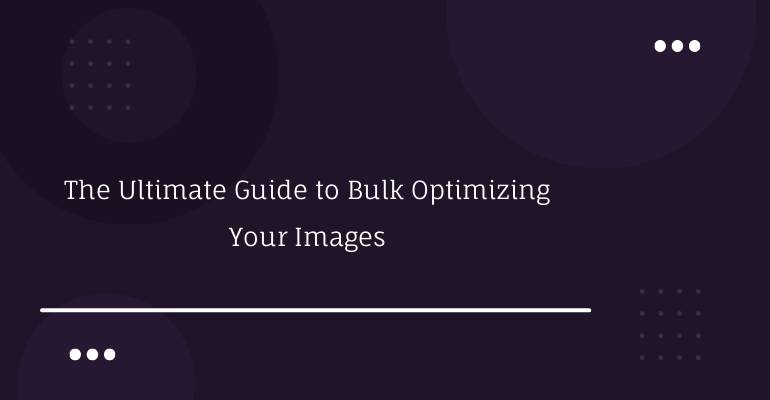The Ultimate Guide to Bulk Optimizing Your Images
Images are an integral part of any visual content strategy. They can enhance the overall look and feel of your website or social media profiles, help convey your brand message, and improve user engagement. However, using too many high-quality images can slow down your website's loading speed, resulting in a poor user experience. To ensure that your images load quickly and efficiently, bulk optimizing your images is the key. In this ultimate guide, we'll explore the benefits of image optimization and provide you with tips on how to bulk optimize your images using Picnie.
Why is image optimization important?
Image optimization is the process of compressing images without losing quality. By reducing the file size of your images, you can improve your website's loading speed, which can positively impact user experience and search engine rankings. Here are some key benefits of image optimization:
- Improved website loading speed: Large image files can significantly slow down your website's loading speed. Optimizing your images can reduce their file size, which can help your website load faster.
- Better user experience: Website visitors expect fast-loading pages. Slow-loading images can frustrate users and lead to a poor user experience. Optimizing your images can ensure that your website is fast and easy to use.
- Higher search engine rankings: Search engines like Google consider page loading speed as one of the factors in determining search rankings. By optimizing your images, you can improve your website's loading speed and increase your chances of ranking higher in search engine results pages (SERPs).
How to bulk optimize your images using Picnie
Picnie makes it easy to bulk optimize your images without any design skills or expensive software. Here are some steps to follow:
Step 1: Log in to your Picnie account or sign up for a new one.
Step 2: Click on the 'Bulk Optimize Images' option from the Picnie dashboard.
Step 3: Drag and drop your images into the upload area. Picnie supports various image formats such as JPEG, PNG, and GIF.
Step 4: Select the image compression level. Picnie offers different compression levels, from low to high. The lower the compression level, the higher the image quality, but also the larger the file size.
Step 5: Click on the 'Optimize Images' button to start the bulk optimization process.
Step 6: Download your optimized images. Picnie will generate a zip file containing all your optimized images. You can download the zip file and replace your original images with the optimized ones.
Tips for effective image optimization
Here are some tips to keep in mind while optimizing your images:
- Choose the right file format: Different file formats have different file sizes and compression capabilities. For instance, JPEGs are best for photographs, while PNGs are ideal for graphics and illustrations.
- Compress images without compromising quality: Use a compression level that reduces the file size without compromising image quality. A balance between quality and file size is essential.
- Use descriptive filenames: Use descriptive filenames that include keywords relevant to your content. This can improve your search engine optimization (SEO).
- Reduce image dimensions: Use an image editor like Picnie to reduce the dimensions of your images to the exact size required for your website or social media profile.
Conclusion
Bulk optimizing your images is essential to ensure that your website or social media profiles load quickly and efficiently. With Picnie, you can easily optimize your images without any design skills or expensive software. Follow the tips outlined in this ultimate guide to bulk optimizing your images, and you'll be on your way to improving user experience, search engine rankings, and overall website performance.






